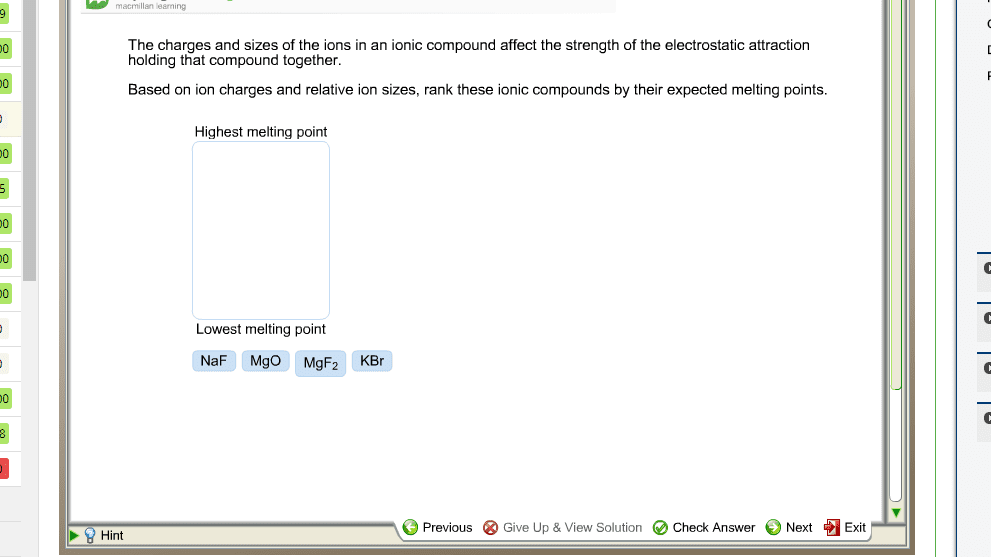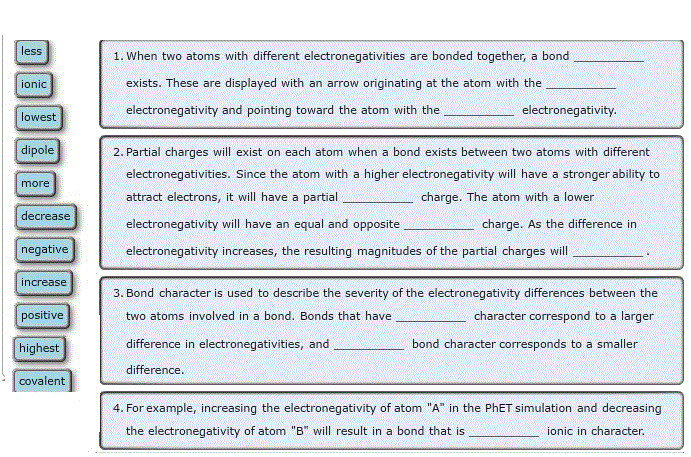Chemistry 1027A/B Chapter Notes - Chapter 2.1: Bond Order, Unpaired Electron, Potassium Bromide
Document Summary
Crystal lattices attractive coulombic forces between the two ions in an ionic bond result in the formation of these very strong structures, which result in high melting and boiling points of compounds. Smaller ions = smaller distances = larger forces = higher melting points. Example: rank nacl, kbr, rbbr, csi from highest to lowest melting point. Dipole movement when the electronegativity between elements is higher, the magnitude of the dipole movement is larger and they orient themselves in an electric field. It is shown by a vector pointing from s- to s+. If there are not any partial charges, there is no dipole movement. Formal charges the entire charge on an atom. Q1 and q2 = the value of charges on ions. Octet rule when main group elements in their most stable form (lowest energy) have a filled valence shell of eight electrons, they have the noble gas configuration ns2np6. Most applicable to second row elements (c, o, n, f)



